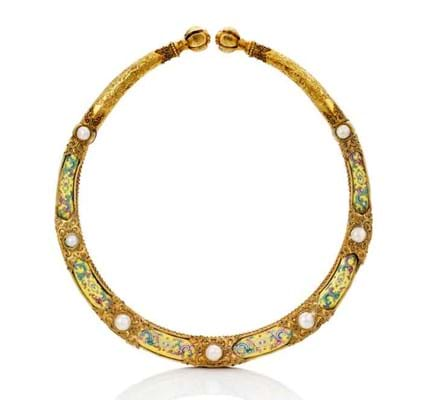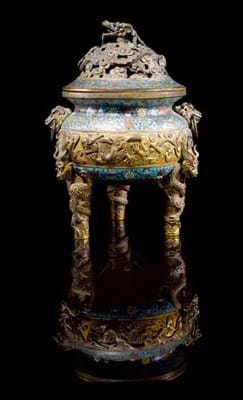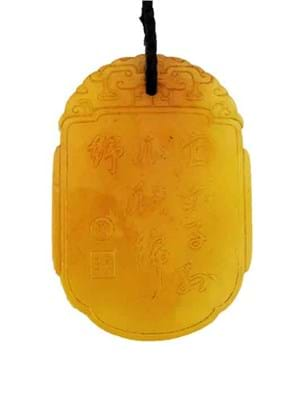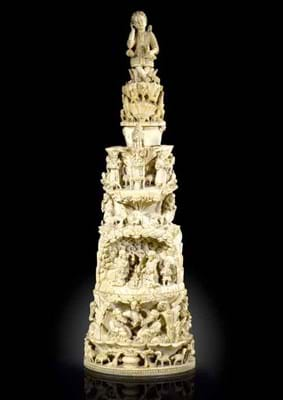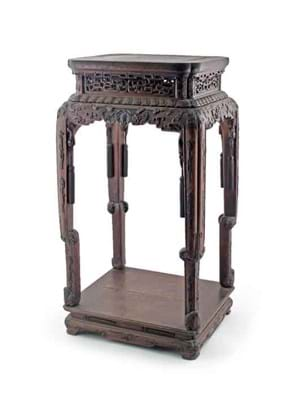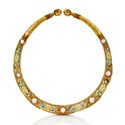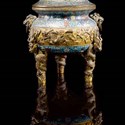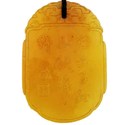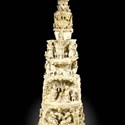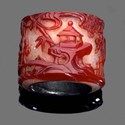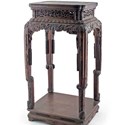If there was a suggestion that, amidst political, economic and legislative change - and continued ruckus over fakery - the market had taken a 'breather' last year, then the feedback from the plethora of regional sales across April, May and early June was largely very positive.
Almost a decade into a sustained boom for Chinese works of art, it had been more difficult than ever to put a sale together but, if individual 'aces' were harder to find in 2013 than they had been two or three years ago - then the market mood was certainly reminiscent of those earlier campaigns.
"The difference between sales in November and sales in May was incomparable. It meant as much as 25% more for the same objects" said Woolley & Wallis specialist John Axford.
He had the most dynamic sale of the season - the collection of Luís Esteves Fernandes - as the opening act of Woolley & Wallis's three-catalogue, £5m May 22-23 series.
Luís Esteves Fernandes (1897-1988) was a Lisbon diplomat who, in 1925, was appointed Third Secretary to the Portuguese Legation in Peking (Beijing).
Six years in China gave the young man the chance to indulge a passion for Chinese culture - something that earned him the respect of members of both the Chinese intelligentsia and the antique dealers with whom he did business.
On future assignments in pre-War Paris, London and Geneva and then in Tokyo (as Portuguese ambassador to Japan from 1939-45) and Washington (as ambassador to the United States, 1950-61), he continued to buy Asian works of art wherever he was posted. John Axford, who pitched for the sale in October against a London saleroom and a Portuguese dealer, was told on New Year's Day that he could sell it.
Logistics
Moving the collection from Lisbon to Salisbury had not been without issues of red tape (every item had to be signed off by the ministry of culture) but for many Chinese dealers and collectors this was the most exciting sale of the season.
As ever, estimates that put little pressure on the market and an excellent old provenance that ruled out recent fakes were crucial to the commercial fortunes of this 183-lot collection, but so too were the component parts that chimed perfectly with Chinese taste.
In particular, Fernandes' interest in the ceremonial paraphernalia of the Qing court set this idiosyncratic assemblage aside from the stereotypical Portuguese collection of export wares and kraak porcelain. Supplemented by the occasional welcome anomaly, this was typified by the financial highlight of the sale - a Beijing enamel and gold filigree ling yue or torque sold at £190,000 - and an array of hardstone belt hooks, archer's rings and pendants aswell as a group of abstinence plaques.
All were hard-fought in a five-hour display of alpha-male shut-out bids, marathon ping-pong exchanges and narcoleptic bid-splitting that saw many items outstrip estimates ten-fold. "It was agony", conceded Mr Axford, although on suspects Fernandes' grand-daughter, seated in the front row, felt rather differently.
Ultimately a catalogue that, at face value, included just half-a-dozen five-figure estimates posted 46 five- or six-figure prices and a hammer total of £1,877,010.
Ling Yue
The financial highlight of the Fernandes collection was the Beijing enamel and gold filigree ling yue, as worn by an Imperial consort.
Jewelled collars or torques were listed in the Huangchao Liqi Tushi (The Regulations for Ceremonial Paraphernalia of the Qing Dynasty) as an essential part of court dress for members of the Imperial family and noblewomen. The number of semi-precious stones used in their manufacture determined rank: in this case the use of seven pearls (all are later cultured replacements) denoted the wearer as a first-ranking official of the Yongzheng or Qianlong court.
Unrecorded either in literature or Imperial portraits, it was estimated at £30,000-50,000 but sold to a Chinese buyer at £190,000.
More highlights appear in the image slideshow at the top of this page.
The buyer's premium was 22%.

